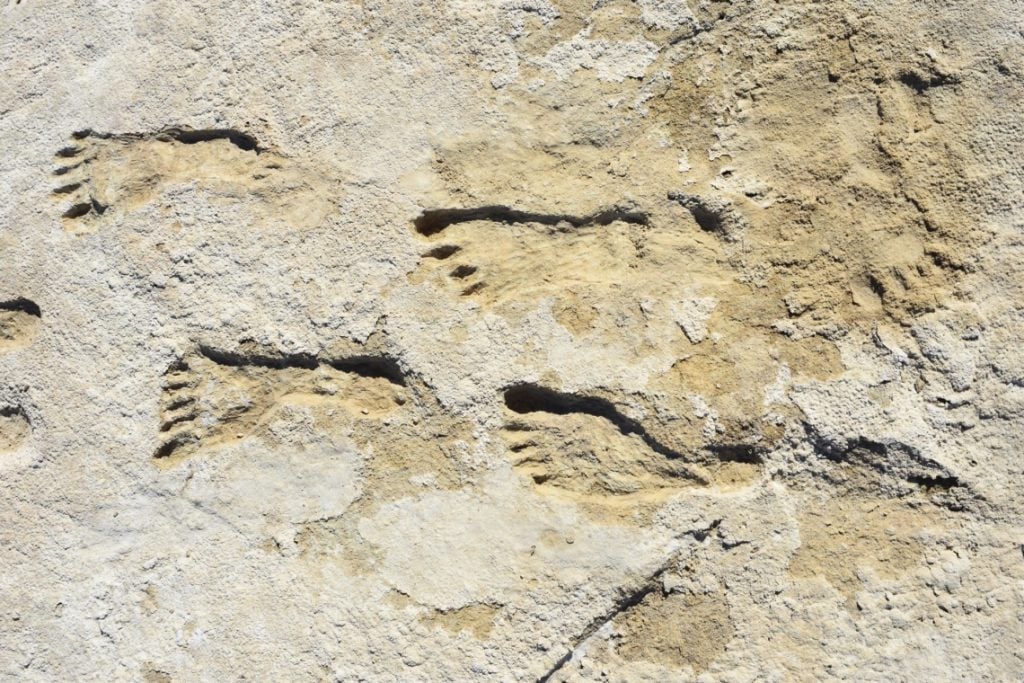Archaeology & History
Fossilized Footprints Discovered in New Mexico Indicate That Humans Were in the Americas Earlier Than Previously Believed
New scientific findings put humans in the Americas 6,000 to 8,000 years earlier than previously thought.

New scientific findings put humans in the Americas 6,000 to 8,000 years earlier than previously thought.

Max Berlinger

Within the scientific community, it had been a long-held belief that our human ancestors first arrived in the Americas around 15,000 years ago, a few thousand years before rising ocean levels washed over the land bridge that connected modern-day Alaska and Russia.
But recent findings in New Mexico have upended these views—though they have not been without controversy. New research, originally reported in the journal Science in 2021, with additional data published in the same journal last week, has put the first human fossils at 21,000 to 23,000 years ago—a good 6,000 to 8,000 years earlier.
The 2021 paper was credited to a team of 15 authors led by Matthew Bennett of Bournemouth University, Poole, U.K.; the more recent report was published by a team of 11 led by Jeffrey S. Pigati and Kathleen B. Springer, both of the U.S. Geological Survey, in Denver, Colorado.
The new theories came with the discovery of fossilized human footprints in White Sands National Park in New Mexico, near the edge of a primordial lakebed that has long since evaporated. The findings were initially contentious due to the dating techniques that were used.
The doubts arose from the fact that the “original dating may have absorbed ancient carbon from the lake—which could, in theory, throw off radiocarbon dating by thousands of years,” according to the AP. More recent studies have utilized additional organic materials—ancient conifer pollen and quartz grains from the same strata as the footprints—to place the date of the fossils. These results have helped bolster the researchers’ findings.
“This is a subject that’s always been controversial because it’s so significant—it’s about how we understand the last chapter of the peopling of the world,” Thomas Urban told the AP. (Urban, an archaeological scientist at Cornell University, was involved with the 2021 study but not the more recent one.)
An independent geological archeologist named Thomas Stafford, however, told the AP that with data from the footprints, pollen, and quartz grains all yielding the same results, the new findings appear to be very credible.
“If three totally different methods converge around a single age range,” he said, “that’s really significant.”
More Trending Stories:
Four ‘Excellently Preserved’ Ancient Roman Swords Have Been Found in the Judean Desert